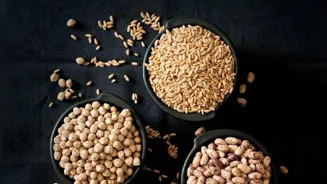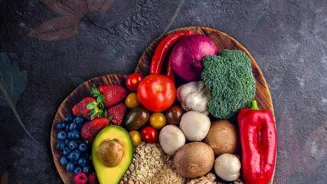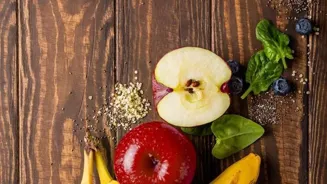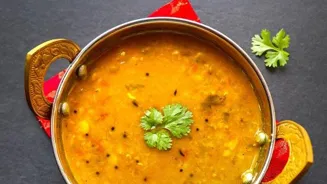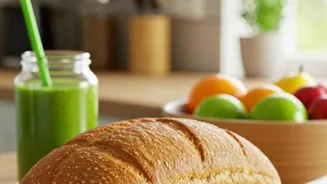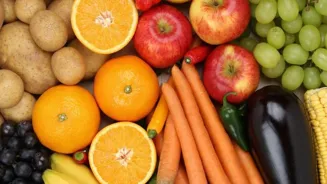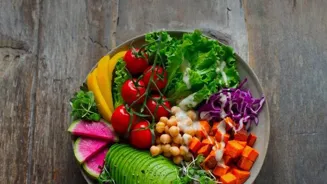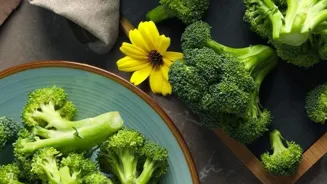Discover the power of plant-based proteins in Indian cuisine! Read on to explore the top sources and boost your health
Namaste, readers! In today's fast-paced world, staying fit and healthy is a priority
for many of us. A crucial part of that is getting enough protein in our daily diet.
While many think of non-vegetarian options first, the truth is, Bharat offers a treasure trove of delicious and easily accessible plant-based protein sources. Let's explore six of the very best to power up your meals and your day!
Lentils (Dal): The Heart of an Indian Thali
No Indian household is complete without a variety of dals simmering on the stove. Lentils, or dal as we call them, are a cornerstone of the Indian diet and a superb source of protein.
Think of the humble masoor dal, the creamy toor dal, the hearty chana dal – each offering a unique flavor profile and a substantial protein boost. One cup of cooked lentils can pack around 18 grams of protein, making it an excellent choice for vegetarians and vegans alike.
Moreover, lentils are loaded with fiber, keeping you feeling full and satisfied for longer, which can be a boon for weight management. They also provide essential nutrients like iron and folate, crucial for overall health. Incorporating dals into your daily meals is incredibly easy.
Enjoy them as a simple dal tadka with roti or rice, add them to soups and stews, or even use lentil flour to make delicious and protein-rich snacks like cheela (pancakes). The versatility of lentils makes them a winner in any Indian kitchen!
Remember to soak them prior, as it makes them easier to digest.
Chickpeas (Chana): Beyond Just Chole Bhature!
Chickpeas, or chana as we know them, are another powerhouse of protein and fibre that are widely consumed across India. While chole bhature might be the first thing that comes to mind, chickpeas have so much more to offer.
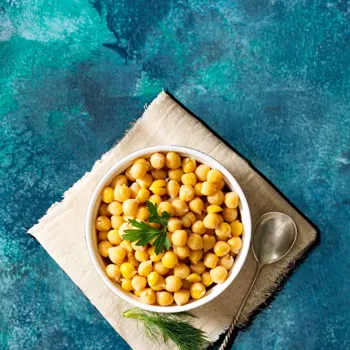
One cup of cooked chickpeas contains around 15 grams of protein, along with a good dose of fiber and complex carbohydrates. This combination makes them a slow-releasing energy source, keeping you energized throughout the day. Chickpeas are also rich in iron, folate, and phosphorus.
Explore innovative ways to incorporate chickpeas into your diet beyond the traditional chole. Roast them with spices for a crunchy and healthy snack, add them to salads for extra protein, or blend them into a creamy hummus to enjoy with vegetable sticks or whole-wheat pita bread.
Besan, or chickpea flour, is another versatile ingredient that can be used to make everything from pakoras to rotis, adding both flavor and nutritional value. Chickpeas are cheap and easily available, making them an accessible and budget-friendly protein source for everyone.
Quinoa: The Ancient Grain with Modern Benefits
While not traditionally Indian, quinoa has gained immense popularity in recent years for its impressive nutritional profile. What sets quinoa apart is that it's a complete protein, meaning it contains all nine essential amino acids that our bodies cannot produce on their own.
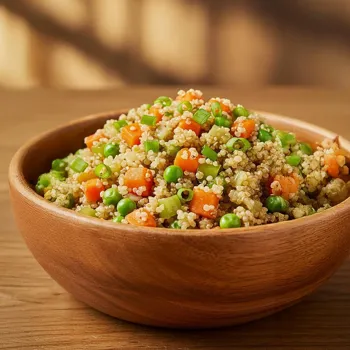
This is a big advantage for vegetarians and vegans who may find it challenging to get all essential amino acids from other plant-based sources. One cup of cooked quinoa delivers around 8 grams of protein, along with a healthy dose of fiber, iron, magnesium, and manganese.
Quinoa has a mild, nutty flavor and a fluffy texture, making it a versatile ingredient that can be used in a variety of dishes. Use it as a replacement for rice in your meals, add it to salads for a protein boost, or cook it with milk and spices for a delicious and healthy porridge.
Quinoa can be slightly more expensive than some other grains, but its nutritional benefits make it worth considering as a regular part of your diet. Also, remember to rinse quinoa properly before cooking to remove any bitterness.
Nuts and Seeds: Small But Mighty Powerhouses!
Nuts and seeds are often overlooked as protein sources, but they pack a surprising amount of protein in a small package. Almonds, walnuts, cashews, chia seeds, flax seeds, and pumpkin seeds are all excellent choices.
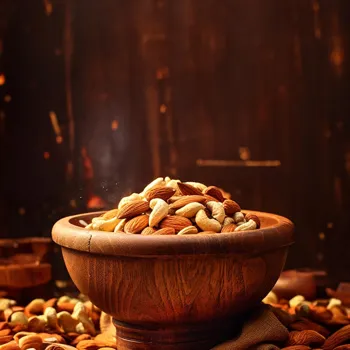
A handful of almonds, for example, provides around 6 grams of protein, along with healthy fats, fiber, and vitamin E. Seeds like chia and flax are also rich in omega-3 fatty acids, which are beneficial for heart health. Nuts and seeds are incredibly convenient to incorporate into your diet.
Snack on a handful of nuts between meals, sprinkle seeds over your breakfast cereal or yogurt, or add them to salads and stir-fries for extra crunch and nutrition. You can also make your own nut butter for a healthy and delicious spread.
Remember that nuts and seeds are calorie-dense, so consume them in moderation. Opt for unsalted and unroasted varieties to avoid added sodium and unhealthy fats. Roasting by yourselves is best.
Soy Products: A Vegetarian’s Best Friend
Soy products like tofu, tempeh, and soy milk are excellent sources of complete protein, making them a staple in many vegetarian and vegan diets. Tofu, made from condensed soy milk, is a versatile ingredient that can be used in a variety of dishes.
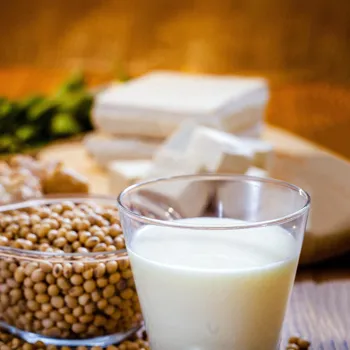
It's relatively bland on its own, but it absorbs flavors beautifully, making it perfect for curries, stir-fries, and even desserts. Tempeh, made from fermented soybeans, has a chewier texture and a stronger flavor than tofu.
It's a great source of protein and probiotics, which are beneficial for gut health. Soy milk is a good alternative to dairy milk and can be used in smoothies, coffee, and other beverages. One cup of soy milk typically contains around 7 grams of protein.
When choosing soy products, opt for organic and non-GMO varieties to minimize your exposure to pesticides and genetically modified organisms. Also, if you have any concerns about soy allergies, consult with a doctor or registered dietician. Soya in any form is great.
Spinach and Other Leafy Greens: More Than Just Salad
While not as protein-dense as some of the other options on this list, leafy green vegetables like spinach, kale, and mustard greens can still contribute to your overall protein intake.
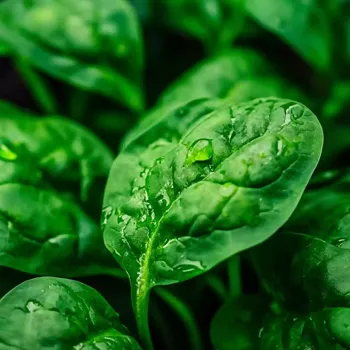
One cup of cooked spinach, for example, contains around 5 grams of protein, along with a wealth of vitamins, minerals, and antioxidants. Leafy greens are also incredibly versatile and can be incorporated into a wide variety of dishes.
Add them to smoothies for a nutrient boost, sauté them with garlic and spices for a healthy side dish, or use them as a base for salads. You can also add them to soups, stews, and even omelets.
While leafy greens alone may not provide all the protein you need, they are an important part of a balanced diet and can contribute to your overall health and well-being. They are cheap and come in different varieties. They may taste bitter but are great for your health.
Embracing a plant-based diet doesn't mean sacrificing protein. With these six delicious and readily available options, you can easily meet your protein needs and enjoy a healthy and fulfilling lifestyle.
Remember to combine these sources throughout the day to ensure you're getting a complete range of amino acids. Stay healthy, stay strong, and eat your greens (and lentils, and chickpeas, and quinoa!) Jai Hind!
AI Generated Content. Glance/InMobi shall have no liability for the content